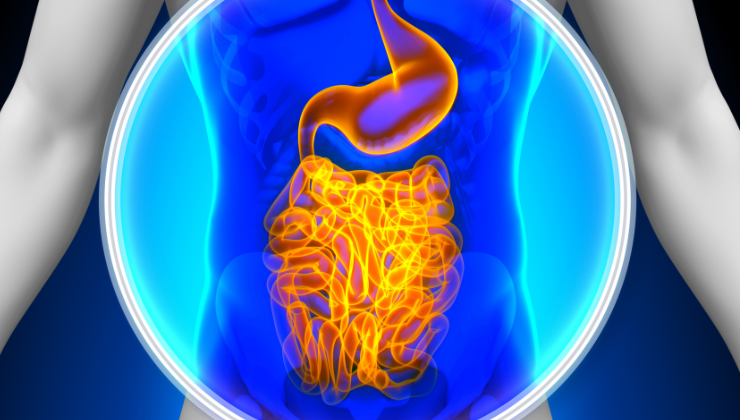Injury nutrition for athletes
Following the sheer number of athletes who have experienced an injury due to the COVID-caused forced ‘off-season’, we just had to talk about injury nutrition. As the lockdown came at a critical point in everyone’s season, it resulted in very sudden changes to training type, volume, and intensity. To make matters worse, just as quickly as sport went away, it came back! This is likely part of the reason why the spike in injuries has occurred all over the world.
So what are some things you should consider when supporting an athlete who is returning to sport from injury?
Acute Phase
The acute phase of injury nutrition is the window after which an injury occurs when an athlete begins to mobilise the area. While doctors, physiotherapists, and surgeons typically dominate this time, they aren’t the only pieces in the large rehabilitation puzzle.
Nutrition can play a critical role in this phase, and it’s not for the reasons you would expect. The acute phase is going to be a period marked by disappointment, pain, and anxiety. It is common for athletes, who are experiencing a sudden lack of control, to resort to different coping strategies. One of the most common coping strategies is the increased frequency of comfort eating, disordered eating or binge eating. Identifying this behaviour early can be a massive step towards managing it and preventing a further spiral out of control. Reach out to a loved one, a coach or a member of our performance team for support.
Another nutritional priority in this phase is to support the inflammatory response and kick-start the healing process. Some critical nutrients to consider are:
Energy: An athlete may feel that they need to restrict their total energy intake due to a substantial drop in their training load. However, their energy expenditure won’t be as affected as they previously thought. In fact, it can sometimes increase acutely depending on the extent of the injury as the body begins the healing process.
Carbohydrates: It’s still important to ensure athletes don’t restrict themselves completely. However, it can generally be reduced as glycogen stores in the muscle are no longer being used to fuel their training sessions.
Protein: This is one of the key nutrients associated with improving outcomes from injury. As training sessions are now restricted, your athlete’s body won’t be getting the same signal to adapt and remodel tissue the way it was prior. However, protein can independently activate that signal provided it is in high enough quantities and consumed at regular intervals. The general rule of thumb when it comes to protein intake during the acute phase of injury is > 2g per kg of body weight per day. This means that if your athlete weighs 70kg, you should be consuming > 140g of protein per day. However, more importantly, they should be aiming to obtain this in 5-6 high protein feeds spread evenly throughout the day.
Leucine: Leucine is part of the Branched Chain Amino Acid (BCAA) family and can work as a trigger for muscle protein synthesis. Animal-based proteins are typically lower in this amino acid.
Fish oil: In combination with protein and Leucine, high doses of fish oil can assist with muscle protein synthesis, particularly in injuries that require prolonged immobilisation (e.g. ligament ruptures or bone fractures)
Creatine: Creatine is one of the most heavily studied supplements and has been shown to preserve muscle, improve recovery and increase muscle mass.
Vitamin D: This vitamin is heavily involved in bone health and muscle regeneration. However, supplementation is only recommended if you have a confirmed deficiency through a blood test.
Functional Recovery Phase
The functional recovery phase of injury nutrition begins when the injured area has healed enough to begin returning to some light activity and loading. The aim of this phase is to progress the athlete back to the strength, function, and performance prior to the injury.
During this phase, motivation may ebb and flow as they progress through the natural successes and setbacks of a rehab program. Even in this phase, there is still the need to be aware of your athlete’s thoughts, feeling, and emotions as disordered eating may still be a very real concern.
Collagen: Collagen works really well in injuries that involve tendons (connecting muscle to bone) or ligaments (connecting from bone to bone). These areas are rich with connective tissue that requires the amino acids found in collagen to develop a strong and resilient structure. Tendons and ligaments are more like sponges – that is, they won’t necessarily store amino acids (such as in muscle) but will soak them up if there is an increased need for them. When training, these structures are placed under a lot of stress which quite quickly increases their need for amino acids. Therefore it’s important to time your athlete’s collagen use to 30 minutes prior to a rehab training session. By doing so you are ensuring that amino acid levels peak by the time there is an increased need for them so that the injured site can repair the damaged tissue.
Vitamin C: Vitamin C isn’t a supplement we would typically recommend for chronic use. However, collagen can’t really do its thing unless vitamin C is also present in the system. So if your athlete is not meeting the RDI for vitamin C you may consider supplementation at the time of collagen consumption.
Energy, Carbohydrate, Protein, and Electrolytes: There are still really important nutrients as they will reduce the risk of re-injury due to fatigue, increase adaptation and improve recovery. You also want to ensure that you’re scaling your athlete’s energy intake according to their training load. As training ramps up, the amount of carbohydrates (and therefore the amount of energy) should also ramp up with it.
Alcohol: Well it’s no secret, but alcohol should be avoided across the rehabilitation process. This isn’t only because of its dramatic effect on muscle protein synthesis but also because of the psychological impacts. Alcohol may dampen psychological coping strategies and emotional resilience, both of which can result in suboptimal coping strategies such as disordered eating. Additionally, alcohol may impact body composition due to its high caloric value while also displacing some of the key nutrients from other foods.
While we know these considerations are important, each situation and each injury is extremely different and requires unique attention. Over at the Compeat Academy, we have many courses dedicated to specific injuries and supporting your athlete’s through difficult times from concussions to torn ACLs. We are here to help support your athletes and are always happy to chat through case studies in our member community. If this sounds like something you’re interested in, get started today.



